If your SD card reader is not working, the issue could be with the SD card, the reader itself, or the computer. To solve this issue, you can try checking the hardware, updating/reinstalling the driver, and assigning a drive letter with MiniTool Partition Wizard.
In the digital age, SD cards are widely used for storing and transferring data, such as photos, videos, and documents, between various devices like cameras and computers.
However, it can be extremely frustrating when you insert your SD card into the card reader on your computer, only to find that it’s not working.
This article will explore the common reasons behind an SD card reader not working on Windows and provide step-by-step solutions to help you resolve the issue.
Why Is My SD Card Reader Not Working?
Before diving into fixes, it’s critical to understand the reasons for this issue. SD card reader failures on Windows typically stem from four areas: hardware-related issues, driver-related issues, SD card issues, or BIOS/UEFI-related issues.
Loose or damaged connections
A loose connection between the SD card and the card reader or between the card reader and the computer (if it’s an external card reader) can prevent the system from detecting the SD card.
This can happen if the card is not inserted fully into the reader or if the USB cable of an external reader is not securely plugged into the computer’s USB port.
Outdated or corrupted drivers
Drivers act as the bridge between Windows and the SD card reader. If they’re missing, outdated, or corrupted, the OS can’t communicate with the hardware.
SD card errors
Sometimes, the problem isn’t the reader, but it’s the card itself. A locked write-protect switch, physical damage, or a corrupted file system can prevent detection.
SD card reader is disabled in BIOS/UEFI
In some cases, the SD card reader may be disabled in the computer’s BIOS or UEFI settings.
How to Fix SD Card Reader Not Working on Windows?
If your SD card reader stopped working, you can try the following methods to fix it.
Fix 1. Run Basic Checks
The first thing you should try is to run some basic checks. These checks take several minutes and resolve a large portion of SD card reader problems.
#1. Check the SD card
First, rule out the SD card as the culprit. Test it on another device. If it works there, the issue is your Windows reader. If it doesn’t work elsewhere:
Check the write-protect switch (on the side of the SD card). If it’s in the “locked” position, slide it to “unlocked”. A locked card won’t be detected or accessed.
Inspect the card for physical damage. Look for bent metal contacts, scratches, or cracks in the plastic. A damaged card may need replacement. If data is critical, use data recovery software first, and then replace it.
#2. Verify the SD card reader
For external USB readers:
Try a different USB cable. Faulty cables are the main cause of external reader failures. Use the cable that came with the reader.
Plug the reader into a different USB port on your PC. Avoid USB hubs.
Test the USB port with another device (e.g., a flash drive). If the port fails with other devices as well, it’s a faulty port (skip to Fix 2 for hardware fixes).
For built-in laptop readers:
Power off your laptop, unplug it, and wait 30 seconds. Restarting resets power to the reader and fixes temporary glitches.
Clean the SD card slot and gently blow away any dust. Do not use a toothpick or paper clip, as this may bend the pins inside.
#3. Restart your PC
Restarting your computer can often resolve many software-related issues, especially temporary glitches, because it clears temporary memory and refreshes the system state.
Fix 2. Run the Hardware and Devices Troubleshooter
Windows has a built-in tool that can automatically detect and fix many hardware issues. When encountering the issue of the SD card reader not working, you can run this tool to check and fix related issues. Here is the guide:
Step 1. Press Win + R to open the Run dialog box.
Step 2. In the box, type msdt.exe -id DeviceDiagnostic and click OK.
Step 3. In the pop-up window, click Next to run the troubleshooter. Then it will scan for issues and attempt to resolve them.
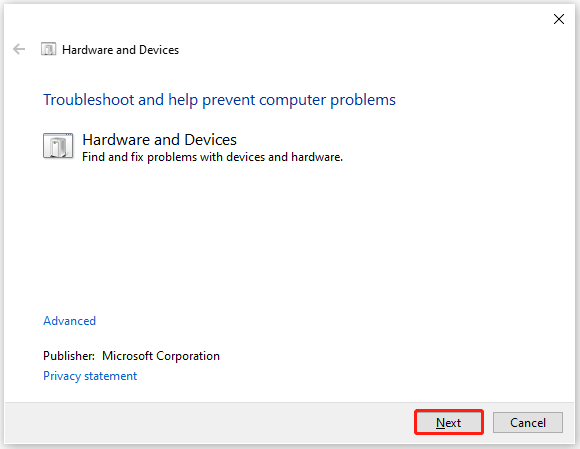
Fix 3. Update or Reinstall the Card Reader Driver
Outdated, corrupted, or missing drivers are the common causes of SD card reader failure. To solve it, you can try updating or reinstalling the SD card reader driver.
Step 1. Right-click Start and choose Device Manager.
Step 2. Expand the Disk drives or Universal Serial Bus controllers category.
Step 3. Find your SD card reader, right-click it, and select Update driver.
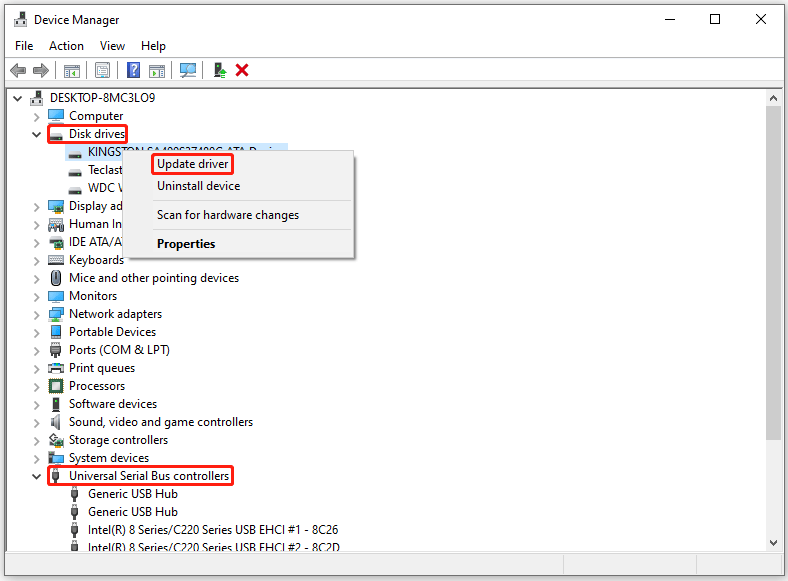
Step 4. Then choose Search automatically for drivers and follow the prompts.
If that doesn’t work, right-click and select Uninstall device. Then restart your computer to automatically reinstall the driver.
Fix 4. Assign a Drive Letter to the SD Card
If the memory card does not show in Windows File Explorer, assign a new drive letter to it manually. Windows may fail to assign a drive letter to the connected removable media or memory card that is already in use by another drive.
Now, you can follow the steps below to manually assign a drive letter to your SD card.
Step 1. Right-click Start and select Disk Management.
Step 2. In Disk Management, right-click the SD card’s partition and select Change Drive Letter and Paths.
Step 3. Click Add.
Step 4. Choose a drive letter from the dropdown next to Assign the following drive letter and click OK. Then the drive should now appear in File Explorer.
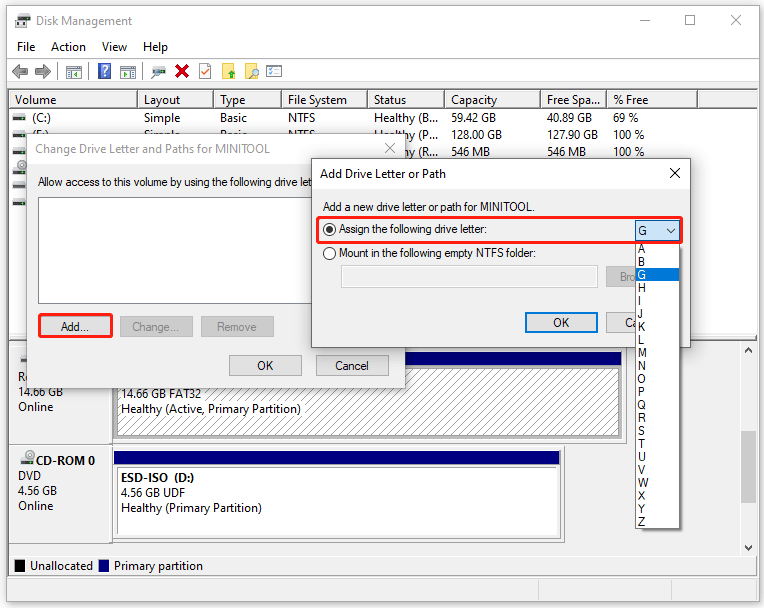
Alternatively, you can use a third-party tool, such as MiniTool Partition Wizard. This free partition manager can help you reassign a drive letter to the drive, making it accessible in File Explorer.
What’s more, this program offers a wide range of features related to disk/partition management. It can help you clone a hard drive, resize/extend partitions, partition a hard drive, convert MBR to GPT without data loss, recover data from hard drives, etc.
MiniTool Partition Wizard FreeClick to Download100%Clean & Safe
Step 1. Launch MiniTool Partition Wizard to enter its main interface. Then select the SD card’s partition and click Change Drive Letter from the left action panel.
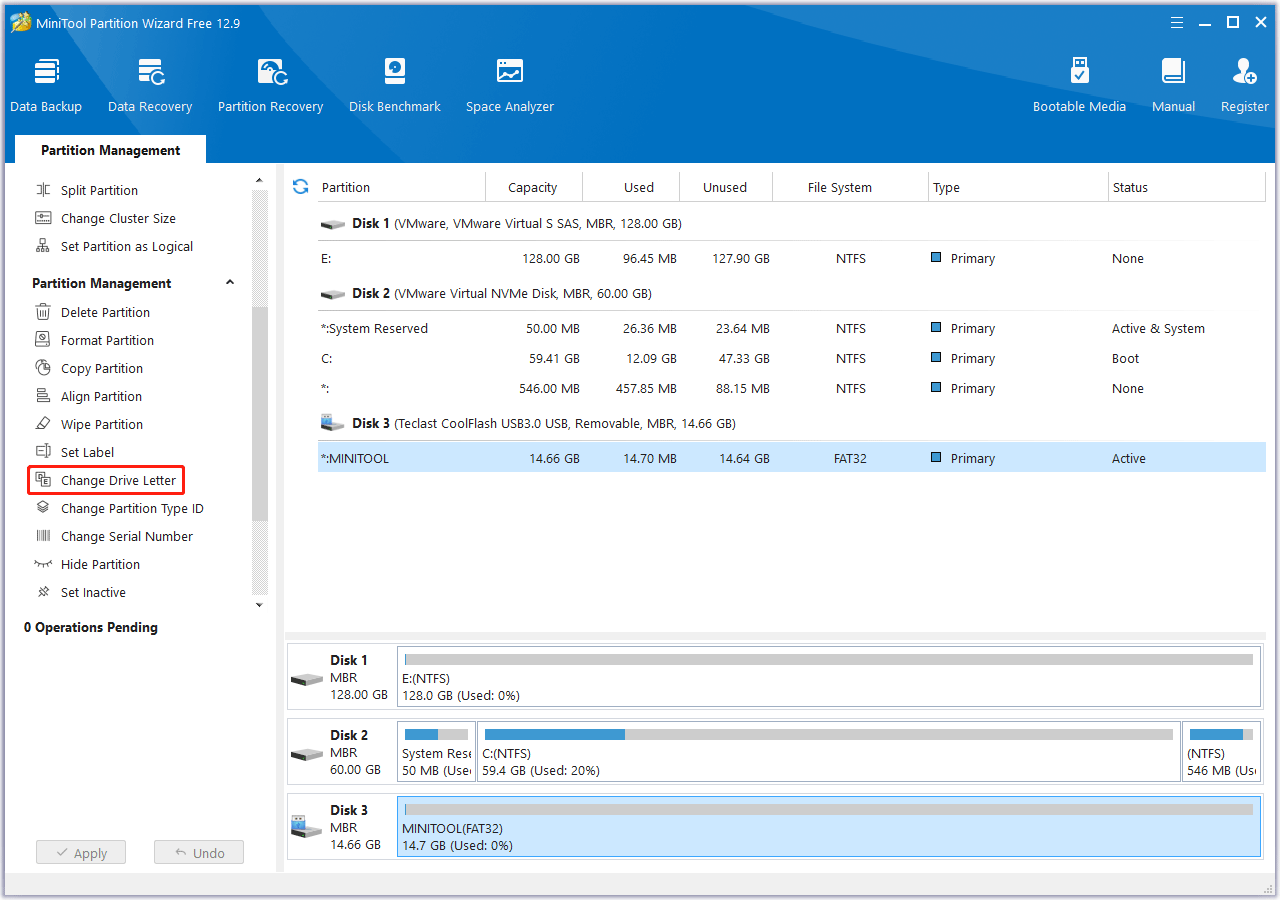
Step 2. In the pop-up window, select a letter from the drop-down menu and click OK.
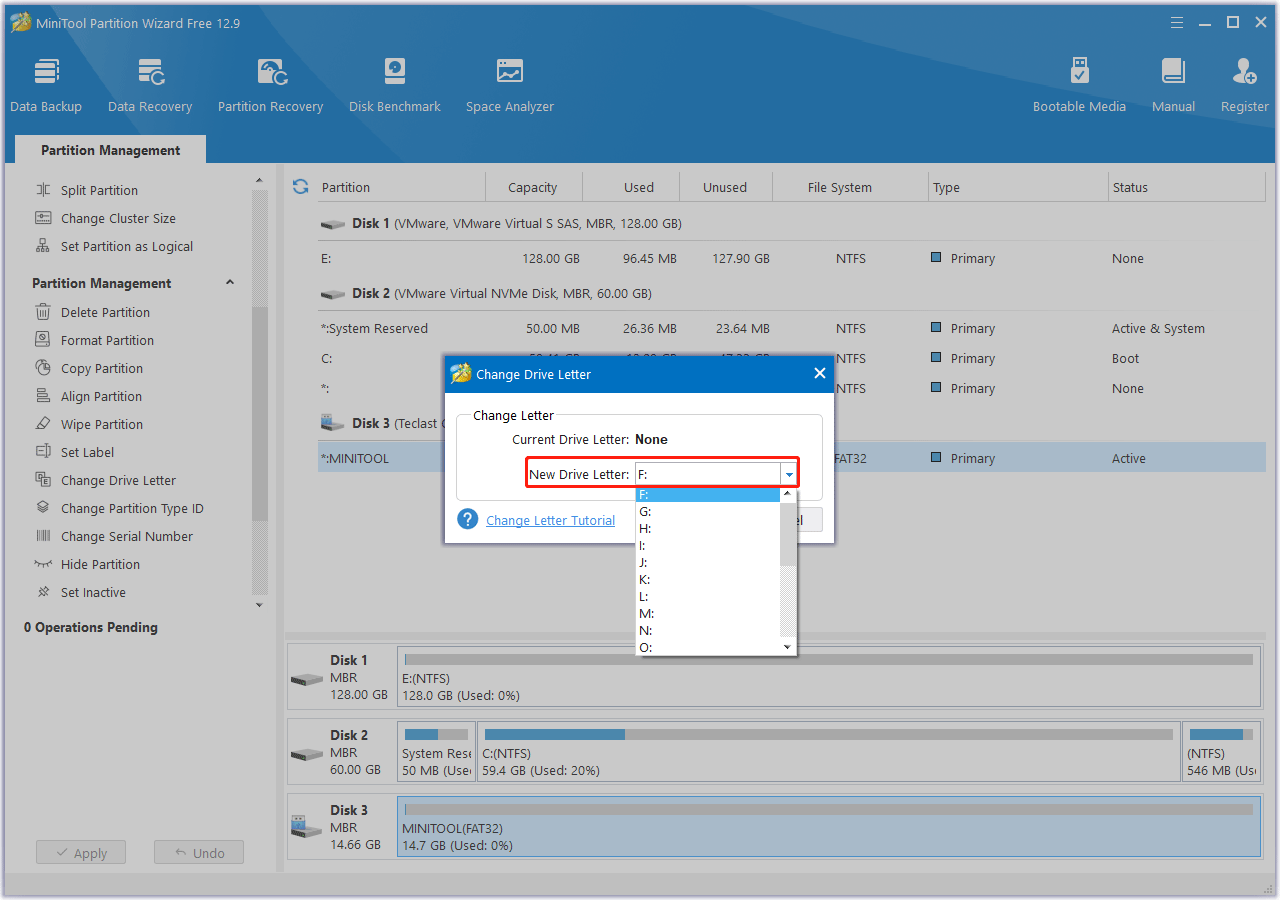
Step 3. When you go back to the main interface, click Apply to execute the pending operation.
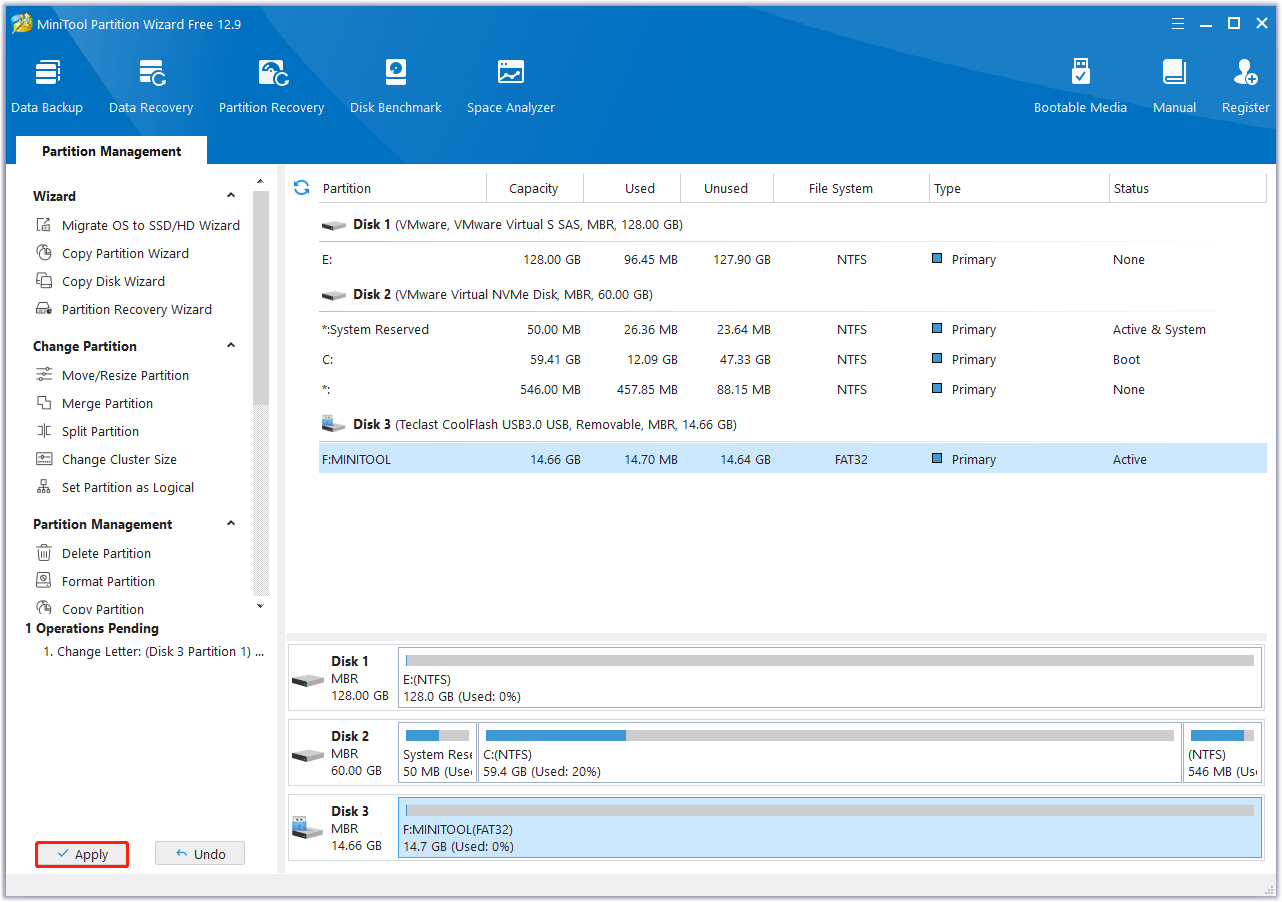
Fix 5. Check and Repair the SD Card for Errors
If the file system on the SD card is corrupted, the computer may not be able to read it. Therefore, you should check and repair the file system error of the SD card by using the CHKDSK command or MiniTool Partition Wizard.
Use the CHKDSK Command
This command can check and repair file system errors on your SD card.
Step 1. Press the Win + R key to open the Run dialog box.
Step 2. Type cmd and press Enter to open Command Prompt.
Step 3. Type chkdsk X: /f /r (replace X with your SD card drive letter) and press Enter.
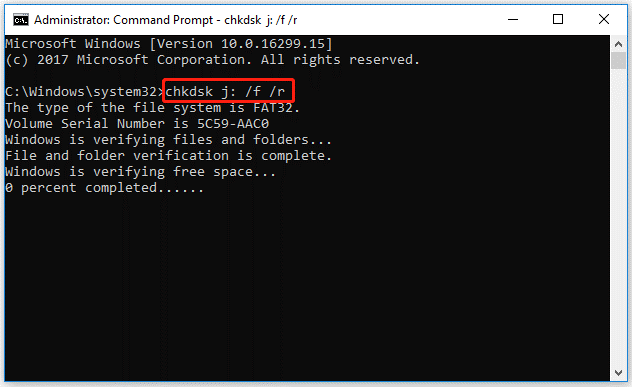
Use MiniTool Partition Wizard
MiniTool Partition Wizard can also help you check the SD card file system errors. This tool is simple and easy to use, and more friendly to people who are not familiar with the CHKDSK command.
To check your SD card for errors with MiniTool Partition Wizard, you can follow the steps below.
MiniTool Partition Wizard FreeClick to Download100%Clean & Safe
Step 1: Launch MiniTool Partition Wizard on your computer and enter its main interface. Click on the target partition and select Check File System from the left action panel.
Step 2: Select Check & fix detected errors and click on the Start button.
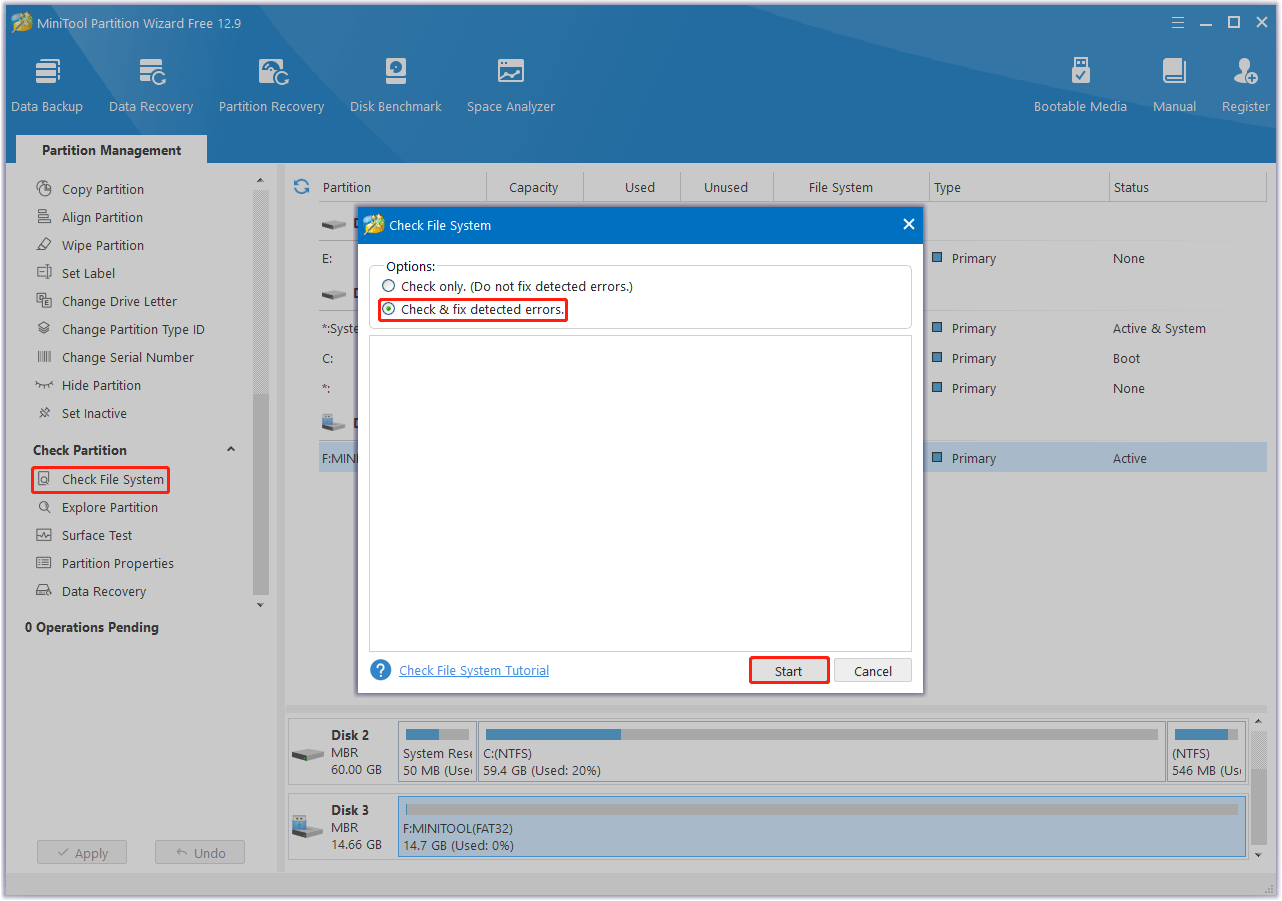
Step 3: After the process ends, any detected file system errors will be fixed.
If you want to know if the hard drive has bad sectors, return to the main interface. Then click on your hard drive and select Surface Test. Then click the Start Now button to start scanning for bad sectors.
If any block is marked red, it means there are bad sectors on the SD card. You can use the CHKDSK command to fix it. If there are too many bad sectors, you should replace it.
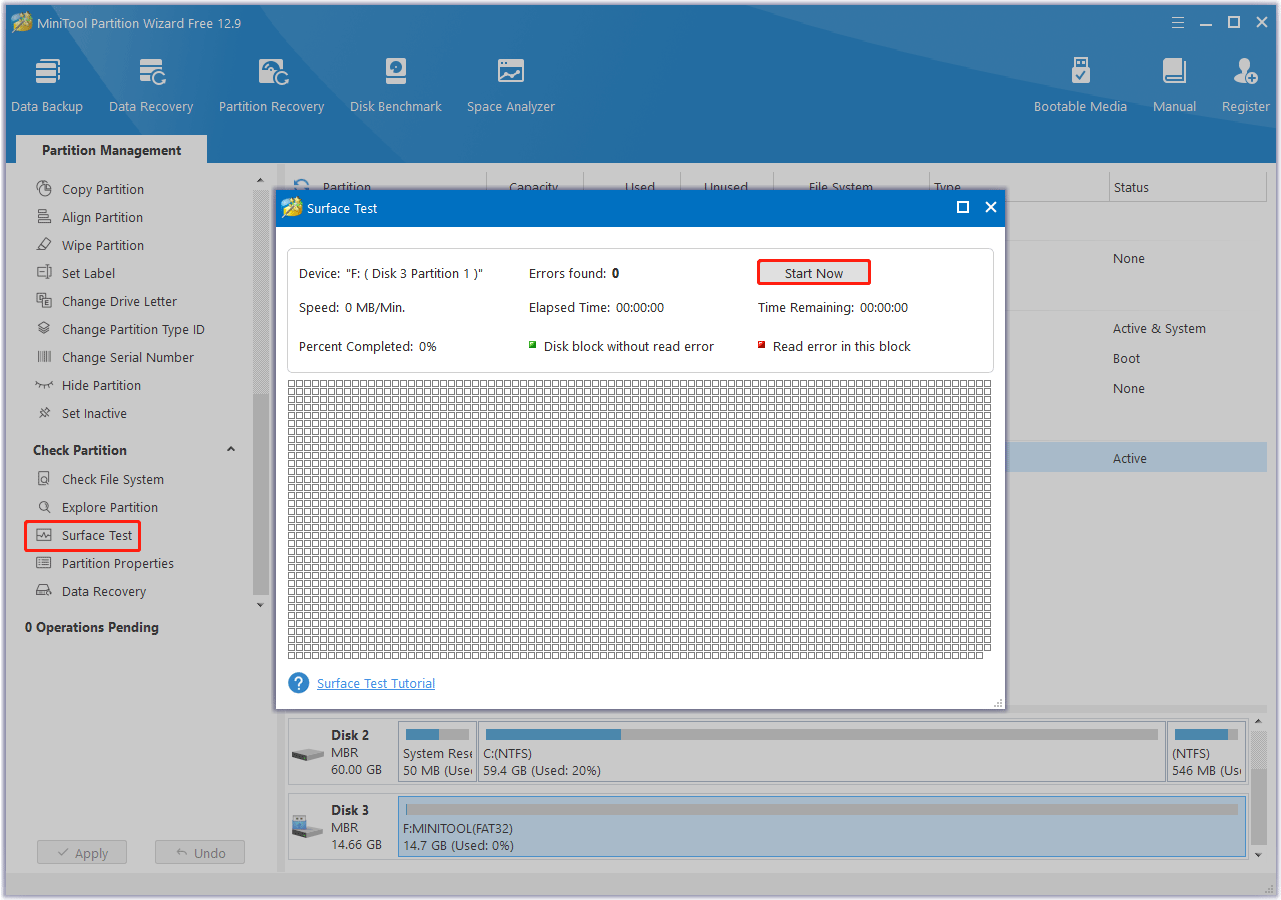
Fix 6. Enable the Card Reader
The SD card reader may be accidentally disabled in your system settings. So, you should enable the card reader in Device Manager.
Step 1. Open Device Manager.
Step 2. Expand the Disk drives or Universal Serial Bus controllers category.
Step 3. Double-click your card reader to open its Properties.
Step 4. Navigate to the Driver tab and ensure the device is enabled. If it is disabled, click the Enable Device button.
Fix 7. Scan Your PC for Malware
A virus could be interfering with your computer’s hardware. Run a full scan with Windows Security to check for malware.
Step 1. Press the Win + I key to open Settings.
Step 2. Go to Update & Security > Windows Security > Virus & threat protection.
Step 3. Select Scan options > Full Scan, and click Scan now.
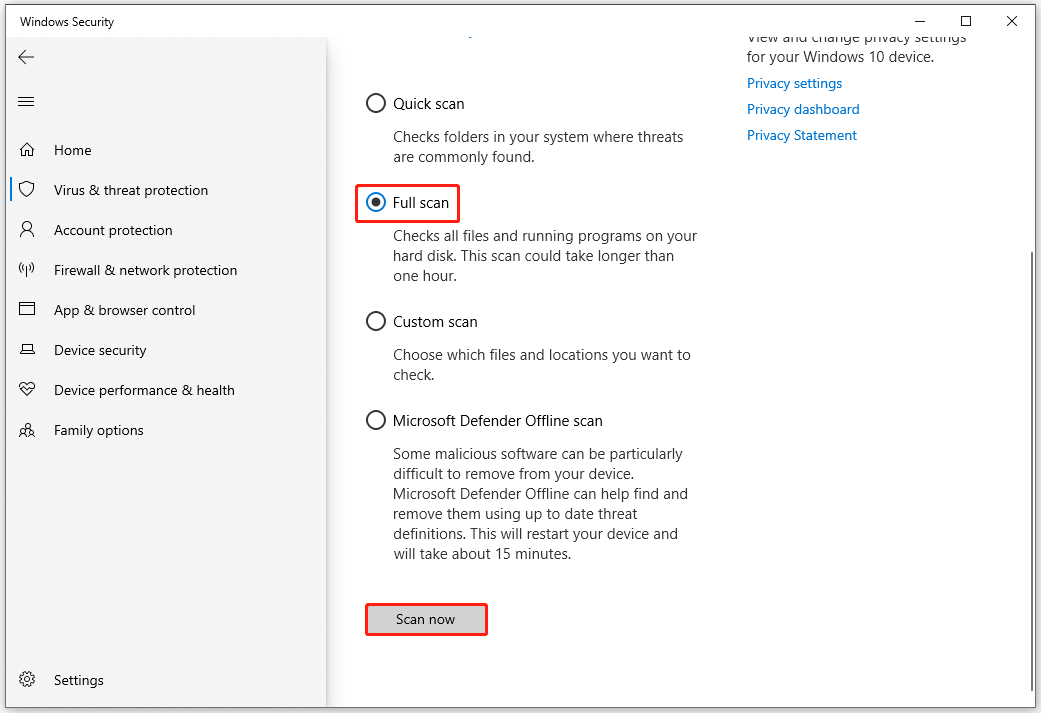
Fix 8. Check BIOS/UEFI Settings
For built-in card readers, it’s possible that your card reader is turned off in the BIOS or UEFI. So, you should ensure that the card reader is enabled in the BIOS or UEFI settings.
Restart your computer and enter the BIOS setup (often by pressing F2, F10, or Del during setup). Then navigate to the Advanced or Peripherals section, look for an option related to the SD card Reader or Memory Card, and ensure it is enabled.
Save the changes and exit the BIOS/UEFI setup. Your computer will restart, and the SD card reader should now be recognized.
Once you’ve fixed the problem, follow these tips to prevent future SD card reader issues:
- Handle SD cards gently: Don’t bend them, touch the metal contacts, or remove them mid-transfer.
- Keep the SD card reader clean: Use compressed air monthly to clear dust from the built-in slots.
- Eject it safely from devices: Always click the Safe Remove Hardware button in the taskbar before pulling out the SD card.
Bottom Line
When an SD card reader is not working on Windows, it can be a complex issue with multiple potential causes. By following the fixes outlined in this article, you should solve the problem.
If you have any questions or suggestions on how to use MiniTool Partition Wizard, please do not hesitate to contact us via [email protected].
SD Card Reader Not Working FAQ
Some card readers have a signal light that indicates a successful connection or activity.
1. Click Data Recovery.
2. Select the SD card and click Scan.
3. Check the needed files and click Save.
4. Select a location and click OK.

User Comments :